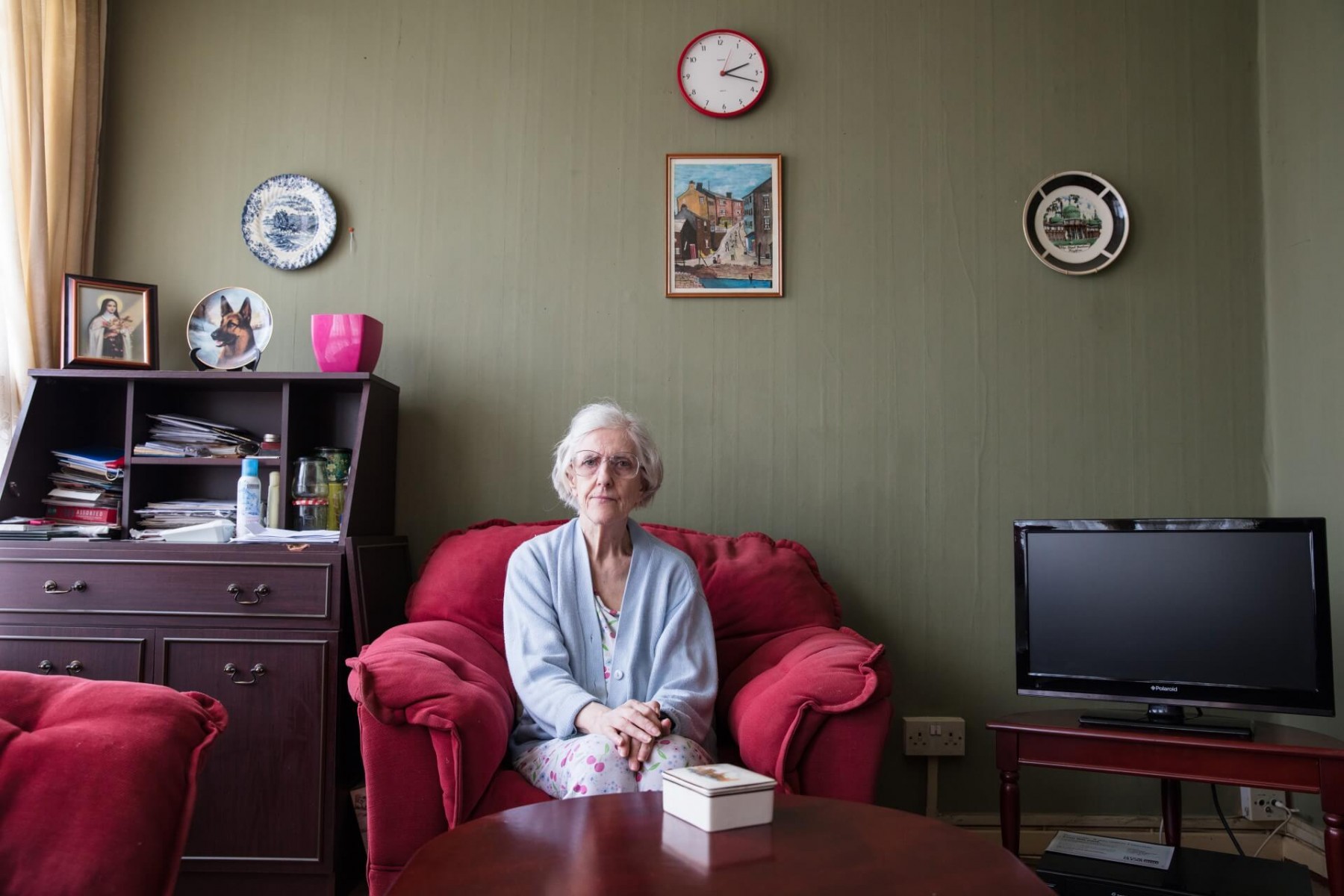Exhibition corrects myth that demolished Brutalist housing estate was unpopular with its residents
A new online exhibition has been launched which features the views of the former residents of Robin Hood Gardens, the London estate which was both lauded as a masterpiece of modernist social housing and condemned as a ŌĆśconcrete monstrosityŌĆÖ before its recent demolition.
Pioneering British architects Alison and Peter Smithson - who coined the term ŌĆśBrutalismŌĆÖ in the 1950s - created the experimental estate with its 'streets in the sky' and indoor-outdoor ŌĆśyard gardensŌĆÖ in 1972. While the award-winning development had large light-filled rooms overlooking generous landscaped public spaces, it was also written off by some as a grim place plagued by crumbling concrete and antisocial behaviour. When its demolition began to be discussed, debate suggested that only architectural writers and scholars would mourn its loss.
Lecturer Nick Thoburn from The University of ė┼├█┤½├Į and photographer Kois Miah were dismayed by this, as they felt the residents of Robin Hood Gardens were entirely absent from the debate about its merits, failings and impending demise. Therefore, they set out to chronicle the lives and opinions of the people who lived there in the years before its demolition alongside researchers Aklima Begum and Runa Khalique.
They have now which features quotes from interviews with the residents, alongside 140 striking images of them and their former homes as well as original architectural drawings and photographs by Alison and Peter Smithson. The interviews focused on the experiences of their lives on the estate, alongside their views about its demolition and regeneration, its representations in the media and politics, and the value of social housing. Nick and Kois hope that the exhibition will challenge the narrative that the estate was unpopular with its residents and that Brutalism is inappropriate for social housing.
ŌĆ£Robin Hood Gardens has been one of the most talked about housing estates in the UK, but whether it was celebrated as a modernist masterpiece or demonised as a concrete monstrosity, the views of the people who actually lived there were almost entirely absent from the debate,ŌĆØ said Nick. ŌĆ£Public figures who favoured demolition would often claim that residents hated the place, thus furthering their case.ŌĆØ
ŌĆ£When we interviewed the residents, it was clear that they enjoyed living on the estate. It had suffered from years of neglect and disinvestment, leaving some residents in distressing conditions - this is what frustrated and angered them, not the architecture. They understood and appreciated its architectural features - the rich social and sensory qualities of its streets in the sky, the dual aspect homes flooded with light and with glorious views across London, and the central green with its extraordinary mound providing a stress-free area protected from urban noise and pollution. Residents also enjoyed the breathtaking scale of the estateŌĆÖs concrete structures, in contrast to the claim that only middle class afficionados enjoy Brutalist architecture.ŌĆØ
Neither end of the ongoing debate about the merits of Brutalist social housing tends to include the voices of the residents - there is a real and urgent necessity to look at it as a lived architecture.
Today, a new development is being built on the site. A single flat-sized section of the estate was salvaged by the new V&A Museum in East London for a permanent exhibition - however, Nick and Kois are critical of it being celebrated and preserved only after it had been emptied of its working class residents.
ŌĆ£Tens of thousands of council homes have been demolished in recent decades, and around 100 London estates are currently under threat of destruction,ŌĆØ said Nick. ŌĆ£Estate demolition is a tremendously damaging process - both socially for the displaced communities, and environmentally due to the carbon emissions created by demolition and rebuilding. It is driven not by need - as is often claimed - but simply by a booming construction and housing industry that reaps vast rewards from soaring land values and house prices.ŌĆØ
To view the online exhibition, visit . Testimony from other residents and further social and architectural analysis of Robin Hood Gardens can be found in Nick ThoburnŌĆÖs .

